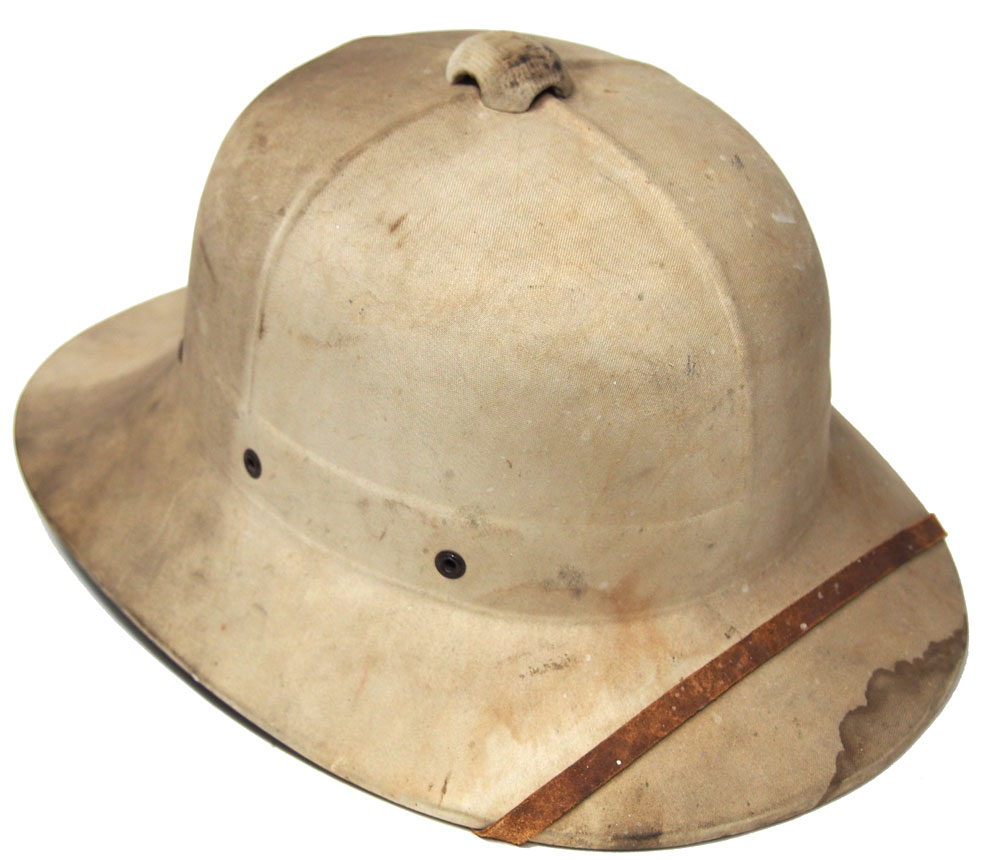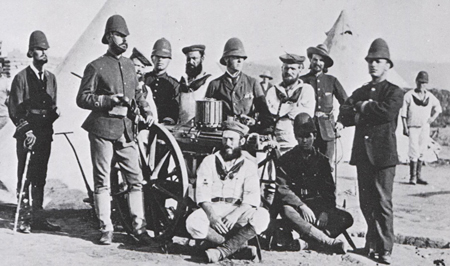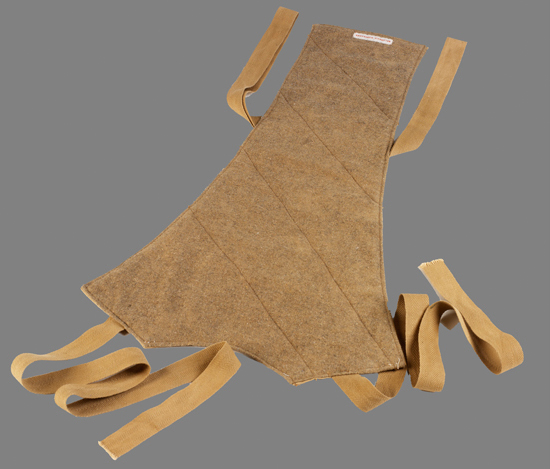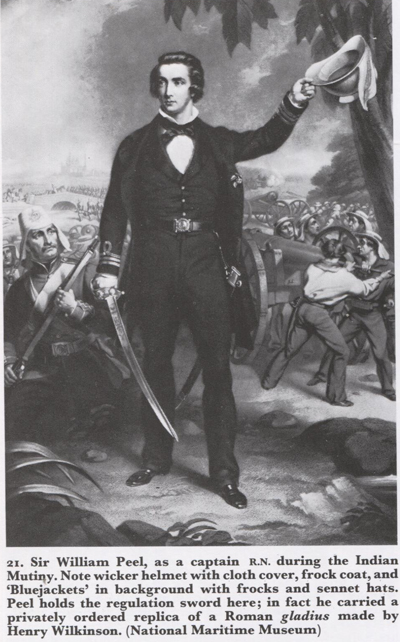 Since launching this website in early 2012 we’ve encountered numerous helmets that haven’t been largely documented, if documented at all. We’ve come across a number of helmets that can only be described as variations of the classic British Wolseley style helmet. These have included helmets made of sola pith, but recently a far more unusual example was offered for sale on eBay. It is a Canadian-made helmet that appears to be based on the naval helmet that was based on the Wolseley. Continue reading
Since launching this website in early 2012 we’ve encountered numerous helmets that haven’t been largely documented, if documented at all. We’ve come across a number of helmets that can only be described as variations of the classic British Wolseley style helmet. These have included helmets made of sola pith, but recently a far more unusual example was offered for sale on eBay. It is a Canadian-made helmet that appears to be based on the naval helmet that was based on the Wolseley. Continue reading
Category Archives: Royal Navy
Naval Brigades, Zululand, 1879

Royal Navy Officers wearing blue helmets. Far right of the photo shows a seaman also wearing the blue helmet. (Photo courtesy National Army Museum)
I must state at the outset that this article was inspired by Tim Reese (Tim’s website) who questioned my description of the blue helmets worn by the Royal Navy as being standard Foreign Service Helmets with blue cloth covers (see Sun Helmets in the Royal Navy). On closer inspection that is obviously not the case. They are blue cloth helmets in their own right. Tim and I are in disagreement as to the “flared” helmets worn by two of the officers: Tim positing that they are the product of rough wear and storage; I say that they are too symmetrical and in good condition for that to be true. It remains a moot point. Continue reading
Sun Helmets in the Royal Navy
Although not officially established as part of a tropical uniform for officers until 1885, the sun helmet was used unofficially as far back as the Indian Mutiny (1857-1858). It was described as being a “white helmet with blue pagri.” 1 Continue reading
British Army Spine Pads

A First World War period British Army issue spine pad. The pad was worn to protect the wearer’s spine from intense heat that was thought to cause heatstroke. (Photo Imperial War Museum, author’s collection)
“The spine pad has become a dull museum piece, and it is probable that specimens are nowadays not easy to find. Yet to those living in tropical areas during the early part of the century and to those serving with the British Army in hot climates during the First World War, memories may be evoked of a piece of cloth of cotton, silk or wool, plain or quilted, several inches wide, attachable to the shirt or coat along the spine, and sometimes with a coloured lining. It is now difficult to accept that this mere piece of cloth could in any way protect from the effects of the sun. But the purpose of the spine pad was so closely linked with the development of ideas concerning body heat, fever and sunstroke, that one must be prepared to explore many early lines of thought for an understanding of its origin and its demise.” 1 So writes E.T. Renbourne , retired Major, Royal Army Medical Corps, in 1956. Continue reading

